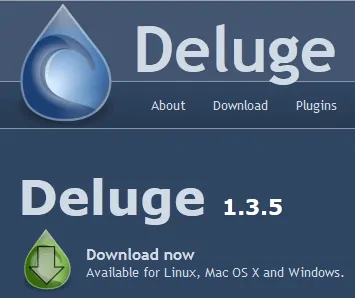
- Portable deluge client generator#
- Portable deluge client verification#
- Portable deluge client trial#
Jim O’Donnell concludes: “This is a great result for the Alba asset and for CUE. We look forward to further successful collaboration with Chevron on future projects.” Steve Nickerson, managing director of Clearwater Fire Solutions, comments: “We are delighted to have had the opportunity to prove the concept of Siron dry deluge testing on ANP and are indeed glad that Chevron have embraced the technology in full.
Portable deluge client verification#
regulator, independent verification bodies, and Chevron’s Energy Technology Company (ETC).”Īlasdair continues: “Another advantage of the dry deluge testing is the deluge system can remain live and ready for use while under test.” Additionally, the system has been approved for use by the U.K. All this was done in a timely manner without the drawbacks of cascading water.Īlasdair states: “The offshore teams were happy as there is no need to exclude personnel from an area during testing as the dry vapour is non-flammable, has no health impacts, and is environmentally friendly. As the dry vapour replicates the properties of water the Clearwater team successfully identified and cleared multiple deluge blockages. The first trials on ANP proved the viability of the system.
Portable deluge client trial#
In most cases no engineering modification is required.”Īlasdair and his team undertook the CPDEP light process to evaluate the Siron system for a trial on the Alba Northern Platform (ANP).
Portable deluge client generator#
The generator is small, portable and can be connected via drain lines or through a deluge nozzle connection. In particular, Alasdair identified Clearwater Fire Solutions, a local Aberdeen based company which had recently developed the Siron dry deluge testing system.Īlasdair explains: “The dry deluge testing consists of a dry vapor system which uses a small electrical generator to blow dense vapor through the deluge pipework to replicate the properties of water. He discovered that dry deluge testing had been developed for servicing deluges in the nuclear industry and that the methodology was now beginning to transfer to the oil and gas industry. Taking on the challenge, Alasdair Orvis, Chevron Upstream Europe’s (CUE) technical safety engineering team lead set about looking at alternatives. Given the potential issues associated with this we started to consider whether there could be an alternative solution to wet testing.” Regulations require deluge functionality to be tested annually.

Jim O’Donnell, Alba asset manager, explains: “The volume of water used in testing wet deluge systems can lead to water damage to equipment, an increase in the rates of corrosion and can result in a shut down in production. However spraying water, particularly sea water, onto plant is not ideal. Water deluge systems are an integral part of most Oil and Gas facilities active firefighting safeguards and need to be tested regularly to demonstrate functionality.


 0 kommentar(er)
0 kommentar(er)
